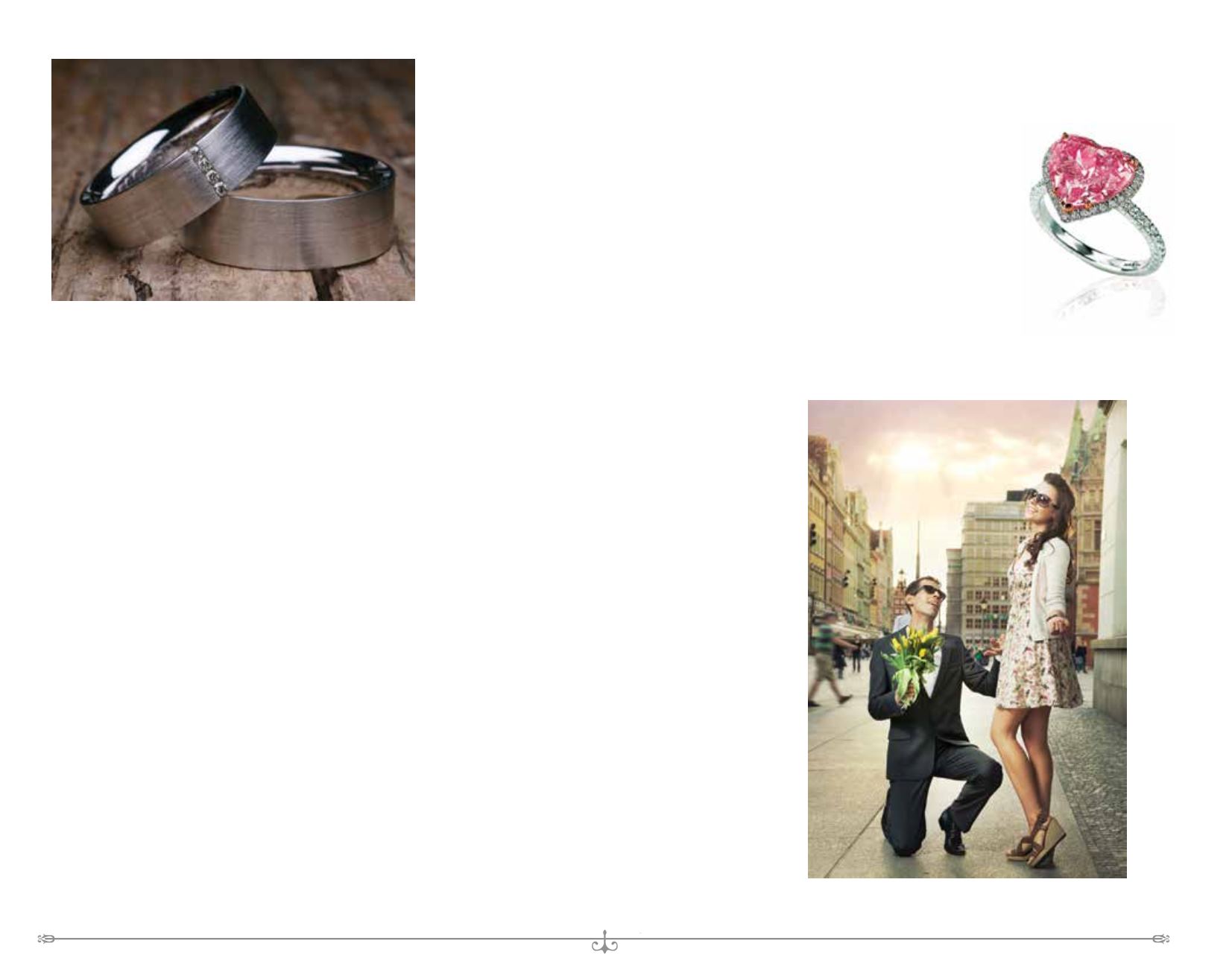

C H I C A G O W E D D I N G & P A R T Y R E S O U R C E
W W W . C H I C A G O W E D D I N G R E S O U R C E . C O M
54
F A S H I O N S , J E W E L R Y , A C C E S S O R I E S F O R M E N & W O M E N
Diamonds may be a girl’s best friend, but they are not the
only choice for a breathtaking engagement ring. More
brides-to-be are choosing other gems to be the focal point
of their engagement rings in an effort to stand out or save
money.
Here’s what the experts say about the trend and how to
choose a ring that will last a lifetime.
BIG THREE AND OTHER GEMS
The most popular gemstones usually chosen for
engagement rings are known in jewelry circles as the big
three: sapphire, ruby and emerald.
Richly colored sapphires and rubies are hard gems, making
them ideal for daily wear.
The vibrant green hue of emeralds is eye-catching, but these
gemstones are softer and may risk damage over time.
Other non-traditional stones include peachy pink
morganite and green tourmaline in shades from forest to
seafoam and cool blue aquamarine. Tanzanite is another
popular choice known for a rich deep blue or purple
tone. This stone is pretty rare since it was only recently
discovered near Mount Kilimanjaro in Tanzania.
Not all brides are nixing traditional diamonds — they just
don’t want them as the center stone. Some rings include
smaller diamond accents while others pair a diamond and
a gemstone as the centerpieces to add pop of color. Some
brides are even opting to add an attention-grabbing (and
pricey) black diamond.
Unique metals are also on the rise. Instead of traditional
gold, silver or platinum bands, many couples are choosing
rose gold and copper based rings to pop the question.
Besides looking beautiful, non-traditional gemstones come
with an added bonus: they tend to come with a lower price
tag than diamonds. By saving a little cash on the ring, you
can put more towards your wedding day, honeymoon or a
new home.
TAKING A NONTRADITIONAL STEP
Whether you’re just looking for a unique ring, or you are
trying to stretch your budget, there are a few things to keep
in mind if you are considering a nontraditional gemstone.
First, you may be able to attain the look of a diamond for
less. Moissanite is a naturally occurring silicon carbide that
shares many diamond characteristics minus the price.
Second, and most importantly, be sure to pay attention to
the hardness of whatever gemstone you choose.
One must always consider the hardness and wearability of a
gemstone before choosing it for an engagement ring, since
it will likely be worn daily a lifetime.
© CTW Features
Gemstones are growing in popularity amongst modern brides.
Here’s what you need to know about these non-traditional jewels
By Kristen Fischer
Say ‘Yes!’ to a Non-Diamond
Engagement Ring









